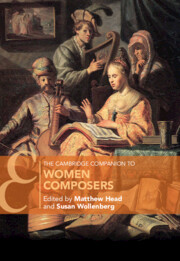421 results
Chapter 3 - Central Europe
- from Part I - Zones of Influence
-
-
- Book:
- Europe in British Literature and Culture
- Print publication:
- 13 June 2024, pp 53-69
-
- Chapter
- Export citation
10 - Burning Sappho
- from Part III - Authors
-
-
- Book:
- The Cambridge Companion to Australian Poetry
- Print publication:
- 13 June 2024, pp 167-182
-
- Chapter
- Export citation
8 - Generation of ’68 and a Culture of Revolution
- from Part II - Networks
-
-
- Book:
- The Cambridge Companion to Australian Poetry
- Print publication:
- 13 June 2024, pp 134-150
-
- Chapter
- Export citation
Chapter 5 - Vegetarianism in the Fiction of Women’s Liberation
-
- Book:
- Vegetarianism and Veganism in Literature from the Ancients to the Twenty-First Century
- Published online:
- 30 May 2024
- Print publication:
- 06 June 2024, pp 137-173
-
- Chapter
- Export citation
Glitter and Graffiti: Labour, Expertise and the Feminist Remaking of Mexican National Heritage
-
- Journal:
- Journal of Latin American Studies , First View
- Published online by Cambridge University Press:
- 30 May 2024, pp. 1-24
-
- Article
- Export citation

The Cambridge Companion to Women Composers
-
- Published online:
- 23 May 2024
- Print publication:
- 30 May 2024
7 - Queering the Public Sphere
-
- Book:
- The Kazakh Spring
- Published online:
- 16 May 2024
- Print publication:
- 23 May 2024, pp 220-243
-
- Chapter
- Export citation
Chapter 17 - Female Fellowship
- from Part IV - Movements and Causes
-
-
- Book:
- The Cambridge Companion to William Morris
- Published online:
- 03 May 2024
- Print publication:
- 23 May 2024, pp 233-244
-
- Chapter
- Export citation
14 - Sexuality in Islamic Traditions
-
-
- Book:
- The Cambridge World History of Sexualities
- Published online:
- 26 April 2024
- Print publication:
- 16 May 2024, pp 293-313
-
- Chapter
- Export citation
11 - Sexualities and Dictatorships of the Twentieth Century
-
-
- Book:
- The Cambridge World History of Sexualities
- Published online:
- 26 April 2024
- Print publication:
- 16 May 2024, pp 227-246
-
- Chapter
- Export citation
17 - Feminism and Modern Sexuality
-
-
- Book:
- The Cambridge World History of Sexualities
- Published online:
- 26 April 2024
- Print publication:
- 16 May 2024, pp 366-387
-
- Chapter
- Export citation
22 - Sex in Sydney in the Twentieth Century
-
-
- Book:
- The Cambridge World History of Sexualities
- Published online:
- 26 April 2024
- Print publication:
- 16 May 2024, pp 465-486
-
- Chapter
- Export citation
9 - Celebrity Bodies
- from Part II - Black Optics
-
-
- Book:
- The Cambridge Companion to the Black Body in American Literature
- Published online:
- 09 May 2024
- Print publication:
- 16 May 2024, pp 128-144
-
- Chapter
- Export citation
Chapter 33 - Griselda Gambaro and Beyond: A “Dermography” of Contemporary Women’s Theater and Performance
- from Part III - Literary Names
-
-
- Book:
- A History of Argentine Literature
- Published online:
- 09 May 2024
- Print publication:
- 16 May 2024, pp 520-535
-
- Chapter
- Export citation
3 - The History of Sexuality and Women’s History
-
-
- Book:
- The Cambridge World History of Sexualities
- Published online:
- 26 April 2024
- Print publication:
- 16 May 2024, pp 45-67
-
- Chapter
- Export citation
13 - The Sexual Revolution
-
-
- Book:
- The Cambridge World History of Sexualities
- Published online:
- 26 April 2024
- Print publication:
- 16 May 2024, pp 275-296
-
- Chapter
- Export citation
BinaryTech in motion: The sexgender in the European Court of Human Rights jurisprudence
-
- Journal:
- Leiden Journal of International Law , First View
- Published online by Cambridge University Press:
- 09 May 2024, pp. 1-19
-
- Article
-
- You have access
- Open access
- HTML
- Export citation
Prologue
-
- Book:
- Domestic Service in the Soviet Union
- Published online:
- 25 April 2024
- Print publication:
- 02 May 2024, pp 23-30
-
- Chapter
- Export citation
6 - Women and the Bar
-
- Book:
- Brotherhood of Barristers
- Published online:
- 11 April 2024
- Print publication:
- 18 April 2024, pp 157-190
-
- Chapter
- Export citation
Queering the humanitarian principles of neutrality and impartiality: Implications for humanitarian action, IHL effectiveness and gender justice
-
- Journal:
- International Review of the Red Cross , First View
- Published online by Cambridge University Press:
- 12 April 2024, pp. 1-31
-
- Article
-
- You have access
- HTML
- Export citation



